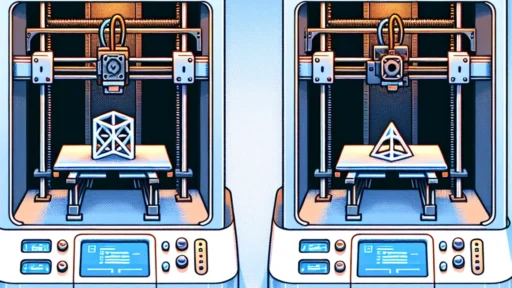Eco-Friendly 3D Filaments: Sustainable Choices for Your Projects
3D printing has taken the crafting, manufacturing, and even home DIY worlds by storm. It offers endless possibilities for creativity and invention. But as amazing as this technology is, it also has an environmental side that can sometimes feel overwhelming. Luckily, there’s a growing eco-conscious movement within the 3D printing community, with a host of sustainable filaments making waves. Today, let’s explore some eco-friendly 3D filaments that can make your projects more sustainable without compromising quality or creativity.
Why Choose Eco-Friendly Filaments?
Most traditional 3D printing materials are derived from petroleum-based plastics, which contribute to pollution and landfill issues. By opting for eco-friendly filaments, you’re not only reducing your carbon footprint but also encouraging a more sustainable industry. These materials come from renewable sources, are biodegradable, or are recyclable, providing you with a chance to make a positive impact with each print you create.
Types of Eco-Friendly Filaments
Here are some popular options in the world of eco-friendly 3D printing filaments:
1. PLA (Polylactic Acid)
PLA is perhaps the most well-known eco-friendly filament. Made from renewable resources like corn starch or sugarcane, this biodegradable material breaks down more easily than conventional plastics, making it an excellent choice for those looking to minimize their environmental impact. Plus, PLA prints beautifully, allowing for vibrant colors and fine details. It’s perfect for prototypes, toys, and decorative objects!
2. PETG (Polyethylene Terephthalate Glycol)
While PETG isn’t entirely biodegradable, it’s known for being much more sustainable than its counterparts, like ABS. Made from recycled plastics, PETG maintains durability and strength, making it a popular choice for functional parts and mechanical applications. The beauty of PETG is that it can be recycled again after use, giving it a second lease on life when disposed of properly.
3. PCL (Polycaprolactone)
PCL, or Polycaprolactone, is a biodegradable polyester with unique properties. It has a lower melting point, making it easier to print on low-temperature 3D printers. PCL is often used in medical applications, but hobbyists typically use it for arts and crafts projects. Since it degrades naturally over time, it offers a straightforward way to reduce your waste.
4. Hemp Filament
For something a bit different, there are recently developed eco-friendly filaments made from hemp. Hemp is a fast-growing crop that requires minimal resources — a total win for sustainability! Hemp filament not only brings a unique texture to your prints but also contributes to the carbon absorption that the crop naturally provides, making it an excellent choice for environmentally-conscious creators.
5. Recycled Filaments
More companies are now offering filaments made from recycled plastic waste, turning discarded bottles and containers into usable printing materials. These recycled filaments can significantly reduce waste and create functional printed objects while utilizing the qualities that traditional plastics offer. The innovation here is impressive, as it closes the loop on many products that would otherwise end up in a landfill.
Tips for Eco-Friendly 3D Printing
Choosing eco-friendly filaments is just one piece of the puzzle when it comes to sustainable 3D printing. Here are a few tips to further reduce your environmental impact:
-
Print Responsibly: Ensure you only print what’s necessary and avoid excessive prototyping. Use digital modeling to refine designs before printing.
-
Energy Efficiency: 3D printers can consume a fair amount of energy. Using your printer during off-peak hours can reduce your electricity bill and lessen the environmental footprint.
-
Recycle Old Prints: If your prints are no longer needed, don’t toss them in the trash! Many filaments can be recycled, so connect with local recycling programs if you’re unsure about disposal methods.
-
Educate Others: Share your journey into sustainable 3D printing with friends or fellow hobbyists. By inspiring others and discussing the importance of eco-friendly materials, you can help spread the green message.
Creating a Brighter Tomorrow
As eco-friendly 3D filaments continue to gain popularity, the future looks promising for creators who want to blend their passion for crafting with a commitment to the environment. By choosing materials that are not just about aesthetics but also about sustainability, you’re making a difference with every layer you print. So, the next time you fire up your 3D printer, why not take a step toward a greener future? Every little choice counts, and together we can build a more sustainable world, one print at a time!






